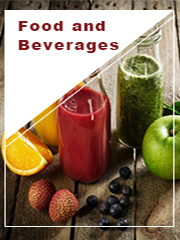Report overview
Food coloring is a kind of food additive that can be eaten in a moderate amount and can change the original color of food to a certain extent.
This report aims to provide a comprehensive presentation of the global market for Food Colors, with both quantitative and qualitative analysis, to help readers develop business/growth strategies, assess the market competitive situation, analyze their position in the current marketplace, and make informed business decisions regarding Food Colors. This report contains market size and forecasts of Food Colors in global, including the following market information:
Global Food Colors Market Revenue, 2019-2024, 2024-2029, ($ millions)
Global Food Colors Market Sales, 2019-2024, 2024-2029, (K MT)
Global top five Food Colors companies in 2023 (%)
The global Food Colors market was valued at US$ 2079.3 million in 2023 and is projected to reach US$ 3463.2 million by 2029, at a CAGR of 7.6% during the forecast period. The influence of COVID-19 and the Russia-Ukraine War were considered while estimating market sizes.
The natural food colors segment expected to be the largest and fastest-growing in the food colors market.
MARKET MONITOR GLOBAL, INC (MMG) has surveyed the Food Colors manufacturers, suppliers, distributors and industry experts on this industry, involving the sales, revenue, demand, price change, product type, recent development and plan, industry trends, drivers, challenges, obstacles, and potential risks.
Total Market by Segment:
Global Food Colors Market, by Type, 2019-2024, 2024-2029 ($ Millions) & (K MT)
Global Food Colors Market Segment Percentages, by Type, 2023 (%)
Nature Food Colors
Synthetic Food Colors
Global Food Colors Market, by Application, 2019-2024, 2024-2029 ($ Millions) & (K MT)
Global Food Colors Market Segment Percentages, by Application, 2023 (%)
Drinks
Baking & Candy Snacks
Dairy Products
Meat
Other
Global Food Colors Market, By Region and Country, 2019-2024, 2024-2029 ($ Millions) & (K MT)
Global Food Colors Market Segment Percentages, By Region and Country, 2023 (%)
North America
US
Canada
Mexico
Europe
Germany
France
U.K.
Italy
Russia
Nordic Countries
Benelux
Rest of Europe
Asia
China
Japan
South Korea
Southeast Asia
India
Rest of Asia
South America
Brazil
Argentina
Rest of South America
Middle East & Africa
Turkey
Israel
Saudi Arabia
UAE
Rest of Middle East & Africa
Competitor Analysis
The report also provides analysis of leading market participants including:
Key companies Food Colors revenues in global market, 2019-2024 (Estimated), ($ millions)
Key companies Food Colors revenues share in global market, 2023 (%)
Key companies Food Colors sales in global market, 2019-2024 (Estimated), (K MT)
Key companies Food Colors sales share in global market, 2023 (%)
Further, the report presents profiles of competitors in the market, key players include:
Cargill
BASF SE
Koninklijke
FMC
DDW
Hanse
GNT
Naturex
Lycored
San-Ei
Sensient Colors
Sethness Caramel Color
WILD Flavors and Specialty Ingredients
Riken Vitamin
Lake foods
Aarkay
Outline of Major Chapters:
Chapter 1: Introduces the definition of Food Colors, market overview.
Chapter 2: Global Food Colors market size in revenue and volume.
Chapter 3: Detailed analysis of Food Colors manufacturers competitive landscape, price, sales and revenue market share, latest development plan, merger, and acquisition information, etc.
Chapter 4: Provides the analysis of various market segments by type, covering the market size and development potential of each market segment, to help readers find the blue ocean market in different market segments.
Chapter 5: Provides the analysis of various market segments by application, covering the market size and development potential of each market segment, to help readers find the blue ocean market in different downstream markets.
Chapter 6: Sales of Food Colors in regional level and country level. It provides a quantitative analysis of the market size and development potential of each region and its main countries and introduces the market development, future development prospects, market space of each country in the world.
Chapter 7: Provides profiles of key players, introducing the basic situation of the main companies in the market in detail, including product sales, revenue, price, gross margin, product introduction, recent development, etc.
Chapter 8: Global Food Colors capacity by region & country.
Chapter 9: Introduces the market dynamics, latest developments of the market, the driving factors and restrictive factors of the market, the challenges and risks faced by manufacturers in the industry, and the analysis of relevant policies in the industry.
Chapter 10: Analysis of industrial chain, including the upstream and downstream of the industry.
Chapter 11: The main points and conclusions of the report.
